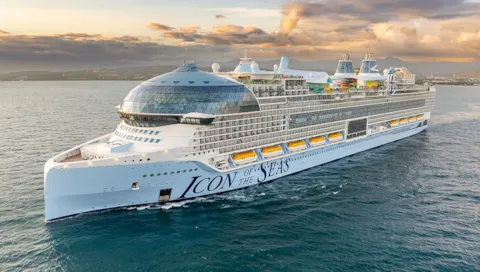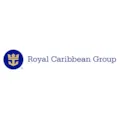Get regular cruise vessel insights!
Don’t be left out. Join the thousands others and sign up today to receive the latest cruise insights.
Sign up
From containers to cruise: the new Head of Marine at Royal Caribbean Group, Palle Laursen, brings decades of experience to the cruise sector. His key message: share knowledge and collaborate across stakeholder groups to make decarbonization a success!


Palle Laursen is Executive Vice President and Head of Marine for Royal Caribbean Group (RCG), where he oversees the company’s global marine operations. Most recently, he was Chief Fleet & Technical Officer at A.P. Moller-Maersk, where he was responsible for the entire fleet of more than 750 container vessels as well as Maersk’s efforts to achieve carbon neutrality by 2040.
Mr Laursen, from your experience in the containership segment, what learnings have you been able to apply in the cruise industry?

Cruise ships are really the pinnacle of shipping in terms of technology. Cruise ships are very sophisticated; they have a lot of technology on board, which makes them both exciting and demanding. At Maersk, I ran a fleet of about 750 containerships. Considering the different geographies and the number of people involved, this takes a high level of process orientation – you could say, the Lean and Six Sigma principles for driving process standardization and optimization. As cruise companies grow, there is a lot to gain from embracing those principles. Each of the brands at Royal Caribbean Group (RCG) has its own value proposition. So, where can we standardize without sacrificing the unique brand experience? Safety is the most obvious answer, but also areas such as maintenance strategies or the more technical aspects of operations that are invisible to guests. It also includes leveraging our combined strengths and our scale in relation to suppliers, but also leveraging the combined expertise of all the great people working across our brands.

What learnings on alternative fuels would you recommend for the cruise industry? How is RCG preparing for future fuel availability?

Destination Net Zero is our goal to achieve net zero emissions by 2050. To that end, the future fuel landscape will be scattered and complex. The key word here is flexibility. It all centres around having the right portfolio of fuels available at scale, at a reasonable price point, and in the right markets. It helps put things into perspective when you realize that a cruise ship costs about ten times as much as an average containership and has a longer expected lifetime, so it is important to make the right design choices with the ability to use multiple fuels to avoid stranded assets. Royal Caribbean Group has been taking steps to future-proof our ships for this very reason. Last year, we began testing biofuels for our current fleet and we also are investing in the development of a tri-fuel, methanol-capable engine for Celebrity Xcel, which will debut in 2025. As we prepare for an evolving energy landscape, we must also drive the energy efficiency of our existing fleet by optimizing the hardware and technology on board.

What role should collaboration play in your view?

I firmly believe that decarbonization should be handled in a similar way as safety. The cruise industry has been great at collaborating and sharing insights about safety. Now we need to work together across the industry with suppliers, competitors, regulators and fuel suppliers to solve the challenge of the energy transformation and decarbonization at the speed everybody expects from us. I think everybody should be willing to share insights into their technology developments. Later, we can compete at being the most efficient at utilizing certain technologies. Working together in solving the issues now is key.

Can you think of any specific energy efficiency enhancements for cruise ships that would achieve major improvements?

Our mission at RCG is to deliver the best holidays responsibly, and that is at the forefront of every decision we make. Driving this is a truly cross-functional task. It starts with how we design our itineraries and future cruises. It extends to how the hardware is designed and optimized, and how we can leverage available technologies to make existing ships more energy efficient, whether by installing variable frequency converters on pumps and fans or exchanging existing lighting systems with modern LEDs – every single measure makes a difference. Looking at behaviour-driven aspects, we also need to give our crews the best tools and information available so they can make the right decisions and execute voyages as energy-efficiently as possible. This needs to become second nature.

Icon of the Seas is the biggest cruise vessel currently. How do you ensure safety for crew and passengers with these new dimensions?

Icon is only marginally larger than our previous class of ships. With our mission at the forefront of everything we do, the safety of our guests and crew is a top priority and has always been managed and handled very carefully. As vessels grow in size, we must embrace modern technology. For example, sometimes we are exposed to unpredicted weather incidents. At Royal Caribbean Group, we have our industry’s first professional in-house meteorologist. He works with the team so we can better identify unusual weather incidents which are not well captured by the traditional maritime forecasting systems. I would also like to see more automated protective systems in the maritime sector such as those in modern cars, like collision avoidance.

How was the collaboration with DNV during the newbuilding phase of Icon of the Seas?

The partnership between DNV and Royal Caribbean Group is deeply anchored and quite unique. The two companies have overcome many challenges together and have been pioneers in finding solutions to complex problems. You need that level of partnership and trust to succeed with something as complex as building Icon of the Seas.

How are you keeping up with an ever more complex regulatory landscape?

Collaboration needs to extend all the way to the regulators. We have a responsibility to make sure regulators understand our business and the challenges we face so the legislation and rules are fit for purpose and ambitious, but realistically achievable. In return, we take our responsibility very seriously to drive the transformation and contribute actively to the regulatory framework. It takes willingness to collaborate on all sides to tackle the challenge of the energy transformation.

Don’t be left out. Join the thousands others and sign up today to receive the latest cruise insights.
Sign up